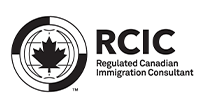Canada’s Population Growth Nearly Stalls Amid New Immigration Policy Changes: What You Need to Know
Canada has long been recognized as one of the world’s most welcoming countries for immigrants. For decades, immigration has been a key driver of Canada’s population growth, economic development, and cultural diversity. However, recent immigration policy shifts have begun to reshape this landscape significantly. According to data released by Statistics Canada, population growth between January 1 and April 1, 2025, was virtually stagnant, increasing by only 20,107 people, a growth rate of 0.0% — the slowest quarterly increase in over a decade.
This near halt in population growth is a major departure from the historical norm. From the first quarter of 2001 through the first quarter of 2024, Canada averaged a quarterly population growth rate of approximately 0.3%. The sharp slowdown reflects the federal government’s deliberate and sustained effort to reduce both temporary and permanent resident admissions. These policies aim to manage pressure on infrastructure such as housing, healthcare, social services, and more, amidst ongoing economic and social challenges.
In this comprehensive post, we break down the numbers, analyze the immigration policy changes that led to this trend, and explore what this means for Canada’s future. Whether you are a prospective immigrant, a policy analyst, or simply interested in Canada’s demographic shifts, this article covers everything you need to understand.
1. Population Growth Trends According to Statistics Canada
The official figures published by Statistics Canada show a significant deceleration in Canada’s population increase during the first quarter of 2025:
-
Population growth: Just 20,107 people, or effectively 0.0%, between January 1 and April 1, 2025.
-
Temporary resident population: Declined by 61,111 over the same period.
This level of growth is unprecedented in recent years, with the only comparable periods occurring during the COVID-19 pandemic-related border closures in 2020 and a similar low growth quarter in 2014.
The government’s policy shift to slow immigration levels marks a dramatic change from earlier decades when immigration was a key source of population increase and economic stimulus. These new figures signal a potentially transformative moment in Canadian demographic policy.
2. Why Has Population Growth Slowed? Key Immigration Policy Changes
Several key immigration policies have contributed to this slowdown. The federal government has enacted a series of reforms, caps, and restrictions intended to reduce both temporary and permanent resident numbers. These changes are part of the 2025-27 Immigration Levels Plan, announced in late 2024, which represents a strategic shift toward tighter control of immigration volumes.
2.1 Permanent Resident Admission Targets Reduced
The 2025-27 Immigration Levels Plan set a new target of 395,000 permanent resident (PR) admissions for 2025, down from 485,000 in 2024. This is a significant reduction and signals the government’s intent to slow the overall pace of immigration.
This reduction in PR admissions affects multiple immigration streams, including economic immigrants, family sponsorships, refugees, and humanitarian programs.
2.2 Temporary Resident Admission Targets Introduced and Restricted
For the first time, the federal government introduced specific targets for temporary residents — including international students and temporary foreign workers:
-
Target of 673,650 temporary resident admissions for 2025.
-
This represents a cap on the number of temporary residents allowed, a move to manage pressures from a growing temporary population.
The government’s broader aim is to reduce the temporary resident population to 5% of Canada’s total population by 2026.
3. Specific Policy Measures Impacting Temporary Residents
The slowdown in population growth is driven largely by reduced inflows of temporary residents, which include international students and temporary foreign workers. Several specific policy changes have contributed:
3.1 Study Permit Caps and Provincial Attestation Letter (PAL) Requirements
Starting January 2024, the government imposed a cap on study permit applications processed in 2025:
-
550,162 applications capped for 2025 processing, down approximately 10% from the previous year.
-
The actual number of permits to be issued is targeted at 437,000.
Additionally, Provincial Attestation Letters (PALs) were introduced as a requirement for most study permit applications submitted after January 22, 2024. PALs require international students to have pre-approval or endorsement from the province where they intend to study, adding a layer of provincial control and reducing the number of eligible applicants.
These caps and PAL requirements aim to better manage the quality and quantity of international students entering Canada and reduce strain on provincial education systems, housing, and services.
3.2 Moratorium on Low-Wage Labour Market Impact Assessments (LMIAs)
A major policy shift affecting temporary foreign workers came into effect on September 26, 2024:
-
Employment and Social Development Canada (ESDC) stopped processing Labour Market Impact Assessments (LMIAs) for jobs in the low-wage stream of the Temporary Foreign Worker Program (TFWP).
-
Jobs with wages below provincial or territorial minimum thresholds or in census metropolitan areas with unemployment rates of 6% or higher are no longer eligible.
Without an LMIA, employers cannot hire foreign workers under these streams, drastically limiting the number of new low-wage temporary workers.
3.3 Restrictions on Spousal Open Work Permits (OWPs)
As of January 2025, eligibility for spousal OWPs has been tightened:
-
Only spouses of international students enrolled in longer, master’s-level or doctoral programs (or specific professional programs such as nursing, engineering, law) qualify.
-
Spouses of foreign workers must be employed in high-skill TEER 0 or 1 occupations, or certain in-demand TEER 2 or 3 occupations.
-
The foreign worker must hold a work permit valid for at least 16 months when the spouse applies.
This change significantly reduces spousal work permit eligibility, impacting family reunification and household incomes for many temporary residents.
3.4 Post-Graduation Work Permit (PGWP) Eligibility Changes
Starting November 1, 2024, eligibility requirements for PGWPs were tightened:
-
Graduates must now have completed programs linked to labour market shortages and meet language proficiency requirements.
-
This limits PGWPs mainly to graduates from fields aligned with Canada’s economic priorities.
-
International students in other fields may no longer qualify for PGWPs, reducing the attractiveness of Canadian education for certain cohorts.
4. The Government’s Rationale: Managing Pressure on Housing and Services
The federal government has been transparent about its reasons for reducing immigration targets and tightening temporary resident policies:
-
Housing affordability crisis: Rapid population growth has exacerbated shortages and driven up home prices and rents in many Canadian cities.
-
Social services strain: Healthcare, education, and social programs are feeling pressure from high numbers of new arrivals, particularly in urban centers.
-
Infrastructure limits: Transit, roads, and utilities require significant upgrades to handle past growth rates.
The government has emphasized the need to balance population growth with sustainable infrastructure and quality of life.
5. What Does This Mean for Canada’s Economy and Society?
The immigration slowdown has mixed implications:
Economic Impact
-
Temporary foreign workers and international students are vital to many sectors such as agriculture, hospitality, education, and technology.
-
Reducing their numbers may lead to labour shortages in some industries.
-
On the other hand, reducing strain on housing and social infrastructure could support more sustainable economic growth.
Social and Demographic Impact
-
Slower population growth means less demographic pressure in cities but may challenge Canada’s long-term plans to offset aging and declining birth rates.
-
Family reunification is impacted by restrictions on spousal work permits.
-
International students face new challenges, which could affect Canada’s global educational reputation.
6. What Prospective Immigrants Should Know
If you are considering immigrating to Canada, studying, or working temporarily, these policy changes matter:
-
Plan carefully: Check if your intended study program or job sector is eligible under new restrictions.
-
Stay informed: Immigration policies can evolve quickly; consult official sources or trusted consultants.
-
Seek expert advice: Immigration consultants like Guide Me Immigration can help you navigate these changes and find the best pathway.
7. Guide Me Immigration: Your Trusted Partner in These Changing Times
Navigating Canada’s immigration system has never been more complex. At Guide Me Immigration, we provide personalized advice and support tailored to your unique situation.
Whether you are an international student, a temporary worker, or someone seeking permanent residency, we can help you understand eligibility, prepare strong applications, and explore alternative pathways if your first choice is affected by policy changes.
Contact Guide Me Immigration
📍 Saskatoon: 535 20th St W, Unit-C, Saskatoon, SK S7M 0X6
📍 Regina: Unit 170 – 2410 Dewdney Ave, Regina, SK S4R 1H6
📍 Dhaka: Apt-2D, H-396, R-6 Avenue 3, Mirpur DOHS, Dhaka 1216
🌐 [www.guidemeimmigration.com]
✉ [info@guidemeimmigration.com]
📞 +1 (306) 700 7440
Conclusion
Canada’s new immigration policies have created a clear shift in population dynamics, leading to the slowest growth in decades. While this slowdown is intended to ease pressures on housing and public services, it also brings new challenges for Canada’s economy and immigration system.
Understanding these changes is critical for anyone planning to study, work, or live in Canada. The landscape is evolving — staying informed and working with experienced immigration professionals can help you succeed despite these shifts.
Other link:http://go-get.ca







